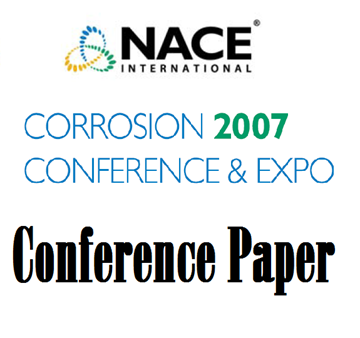Search
MEA Triazine Contactor Optimization to Increase Efficiency and Reduce Fouling Potential
Also Purchased
96612 EFFECT OF OXYGEN ON THE INTERNAL CORROSION OF NATURAL GAS PIPELINES
Product Number:
51300-96612-SG
ISBN:
96612 1996 CP
$20.00
11120 Sulfur Corrosion Due To Oxygen Ingress
Product Number:
51300-11120-SG
ISBN:
2011 11120 CP
Publication Date:
2011
$20.00
07571 Chemistry and Impacts of Commonly Used Amine-Based H2S Scavengers on Crude Unit Towers and Overheads
Product Number:
51300-07571-SG
ISBN:
07571 2007 CP
Publication Date:
2007
$20.00




